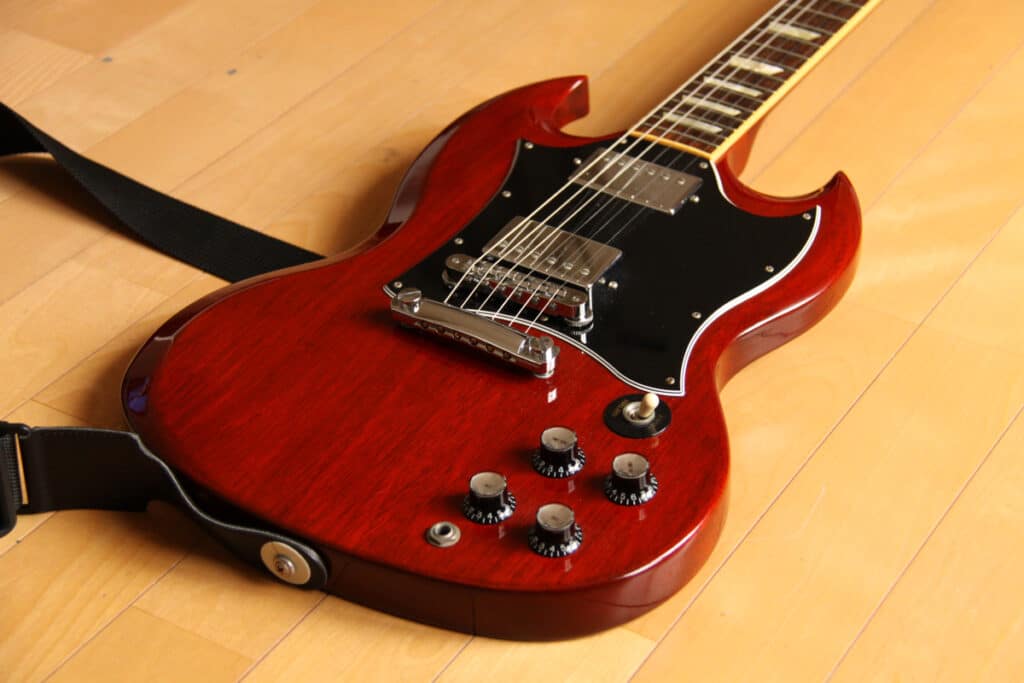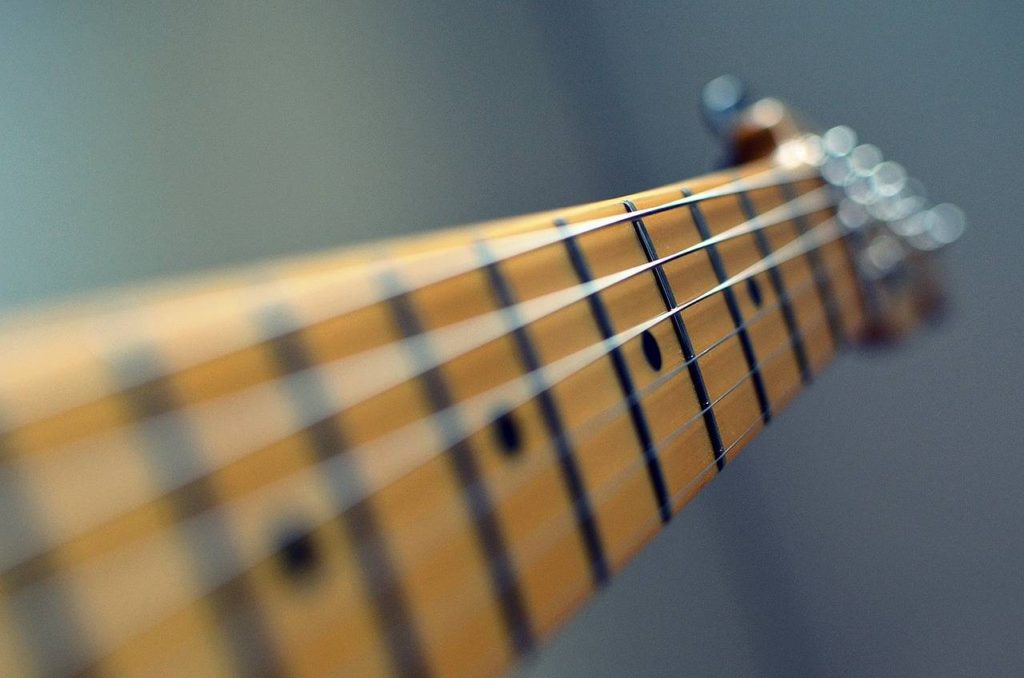The guitar is a chordophone instrument, which means we will often be plucking multiple strings at once. If one of those strings is slightly off-tune the chord, riff, or even solo you are playing will sound terrible.
From the first time you pick up a guitar, and even before your first beginner guitar lessons, it is essential to make sure the notes play correctly! In this article, we will not only show you how to tune a guitar but also dive deeper into the very reasons for the tuning we use.
Standard Tuning
There are 12 notes in the western chromatic scale, if you need help visualizing them it is best to look at a piano keyboard image. Each space between the notes has a distinct sound and this interval is the basis for many ear training courses. Except for one interval, standard guitar tuning moves in fourths.
E A D G B E
E-A, A-D, D-G, and B-E are all fourth intervals, while the lone G-B is a major third. This is the reason fretboard patterns suddenly break up around those strings as we have a whole new musical interval added. If you look at a keyboard again you will notice it spans 7 full octaves, our low guitar note corresponds to an E2 (second octave), and the high E4 matches the fourth octave.
There are many other ways to tune a guitar including all fourths, fifths, open chords, dropped semi or whole tones, but standard tuning is the most useful across genres and the one we will focus on. Once you have standard down it is recommended to try out as many tunings as you like. Just remember the golden rules of avoiding over-tightening and be wary of string gauges that are too heavy for your guitar.
If your guitar is already close to being in tune then you will not need to loosen or tighten the tuners too much. If the sound is far off make sure to make small changes in tension and most of all make sure the tuners are not slipping. If they are moving after tuning, you will never succeed in tuning at all.
Tune Your Guitar with a Piano
Assuming you have an already tuned acoustic piano or even a piano app, you can easily tune your guitar against the proper pitches. Play the second octave bass E note and then tune the lowest bass string to it. Move up to the next A note and copy the A string, next the D, G, B, and finally at the fourth octave of the E for the high string.
This will take some time if you are new as your ears must get accustomed to hearing the pitches go from being wavy or having a ripple effect to sounding the same. Just be thankful you are not tuning the piano as they have about 288 strings!
Tune the Guitar with a Pitch Pipe
Some guitars come with pitch pipes instead of chromatic tuners, these work the same way as using a piano. You blow the appropriate pitch on these harmonica-like devices and then tighten or loosen the strings accordingly. After tuning, strum an open chord, and if anything sounds off you will have to readjust. It is normal for ear tuning to take some practice as it is not easy.
Any instrument that plays similar notes to the guitar can be used as a reference point, even if the note is at a different octave. There will still be a wavering sound between the pitches until the string is brought to the same pitch.
Tune the Guitar with Itself
If you are stuck at a campfire and you have no reference pitch or technology you can always tune the guitar relative to itself! This may not make for exact tuning but if it is done right your playing should sound fine. Just make sure any other musicians that are playing along tune to the same reference the rest use.
Remember the pattern 5 5 5 4 5 and to start on the low bass string first. The 5th fret of the E string is A, so we use that fret to tune the next A. The 5th fret of A is D, the 5th fret of D is G, but then it changes to the 4th fret to tune the B. This is because of that interval change mentioned above. We then resume playing the 5th fret of the B string to match the final E. And of course, the final E should sound an octave above the low E.
Use Standard A=440 Hz
If you want something more exact than your relative tuning you can find a metronome or pitch pipe that has a standard 440 Hz A note signal. Tune the guitar A string to that and then continue your relative tuning like above, this will make sure your final tuning is closer to standard.
And of course, you can tune the A to other frequencies like 432 Hz if you choose! But unfortunately, no magic occurs and it makes you sound dreadfully out of tune with other modern instruments!
Tune with Hardware, Apps, and Software
The other methods mentioned so far are excellent for ear training and getting to know your guitar, but it is also imperative to have a real tuner. Especially if you are new to the guitar you want to be sure you are in the right area in the first place. Playing guitar is overwhelming in the beginning and for many, it helps to have the guitar already tuned!
Take advantage of chromatic tuners, apps, and even online sites that will walk you through the correct method. When you have digital help you are a lot less likely to mess up and break strings. While you are tuning make sure your strings are intonated correctly. Try the relative tuning method above, but this time check it with a machine. All the frets should play the right notes.
Using all these guitar tuning tricks will help you get acquainted with your fretboard, the piano method is especially great for visualizing the notes your guitar covers. As you start to experiment with different guitar tunings pay close attention to how the intervals and chord shapes will change. These note distances and changes will help bring out new vibes and sonic textures.
Now that you know a few different tips on how to tune your guitar it shouldn’t be long until it is second nature. The more you practice the faster and smoother the whole process becomes. Remember to use both technology and your ears from the beginning that way you don’t mess anything up and get to know the notes of your guitar fretboard!
By Shawn Leonhardt for –
Guitar Tricks, the original platform for online guitar lessons.
30 Day Singer, the best place for singing lessons online.



